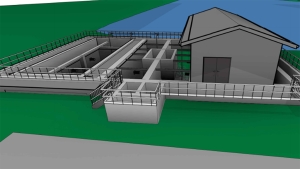It’s time for construction companies to take a bird course.
Charged in deaths of bank swallows
BY PEG HILL
DCN CORRESPONDENT
It’s time for construction companies to take a bird course.
That’s the moral of a lesson a few companies learned after they were charged in the deaths of bank swallows that were nesting in an exposed, vertical bank of excavated soil in a Newmarket housing development.
Now those companies are working with the Canadian Wildlife Service (CWS) to educate other construction firms and contractors on the nesting habits of migratory birds.
They helped the CWS to create a brochure and participated in targeting the companies that will receive it, said Leonard Richetti, a partner at McMillan Binch, the law firm which handled the case.
In what Richetti described as a “creative solution,” all parties—the three to four corporations and about three individuals— agreed to fund the provincial educational package. It also includes advertisements that will appear in Daily Commercial News and the Ontario Homebuilders’ newsletter, said April White, wildlife education and outreach officer for the CSW.
As well, the parties agreed to make a contribution to the Ontario SPCA, which had to euthanize 18 bank swallows.
The total price tag was $10,000 for the educational package and $10,000 to the OSPCA for migratory bird care.
It was “unusual to get all this cooperation,” Richetti said of the innovative sentencing, noting it was “a terrible story.”
In the spring of 2002, bank swallows built nests in the exposed retaining wall after it had been left untouched from the previous fall.
“Witnesses said several hundred were nesting together,” said Gerry Brunet, co-ordinator of investigations for the CWS.
The companies sent crews away from the site in early July when the birds and their nests were discovered. But there was intense pressure from some residents who wanted the soil moved so they could have their lawns sodded, Brunet said.
The developer, construction firm and engineering consulting firm sought advice from the Ministry of Natural Resources. A “miscommunication” occurred, Brunet said, and the crews were brought back.
Digging began with shovels and a backhoe. Residents and the construction crew collected some of the birds, but they were injured when they were put in pails. They were caused further harm by being left out in the sun. Other residents called the Ontario SPCA, which led to the CWS investigating.
“There were reports of some people seeing 50 to 60 birds destroyed,” Brunet said.
Richetti said the corporations do not want to be identified because some of them didn’t know what was going on at the time the birds were injured.
“In addition to those named, the companies felt residents (who demanded that the work go forward) should have been named.”
Publicizing the individuals’ names might also unfairly demonize them in the case. The operator of the backhoe “felt terrible” about what happened, he said. The end result is that the companies have a “heightened awareness of dealing with bank swallows.”
They will now be trying to pass along that heightened awareness, something that White of the CWS admitted had been “inadvertently neglected” by the organization. “The case was an eye-opener for us.”
Very little has been done previously to educate the construction industry on the Migratory Birds Convention Act.
“We have other fish to fry, pardon the pun,” she said, noting that the CWS is kept busy with the Kyoto Accord, fresh water issues and all other wildlife.
According to the general prohibitions of the regulations:
• 5. (1) No person shall hunt a migratory bird except under authority of a permit therefore; and
• 6. Subject to subsection 5(9), no person shall a) disturb, destroy or take a nest, egg, nest shelter, eider duck shelter or duck box of a migratory bird.”
Brunet explained that the word “hunt” encompasses a lot more than the idea of killing the birds with a shotgun. Under the regulations, it also means to “chase, pursue, worry, follow after . . . or attempt in any manner to capture, injure or harass a migratory bird.”
The CWS wants the construction industry to exercise due diligence in protecting wildlife and their habitat from the planning stage through to construction. For example, in a case that Brunet mentioned, preventing bank swallows from nesting could be as simple as covering the exposed earth with plastic prior to their arrival in the spring.
The CWS is prepared to provide images of migratory birds and their habitat. That, however, covers a lot of birds because almost all birds in Ontario are migratory. But companies seeking advice can also speak with the organization’s avian biologist or a wildlife enforcement officer. Information also is available on the CWS Web site www.cws-scf.ed.gc.ca










Recent Comments
comments for this post are closed